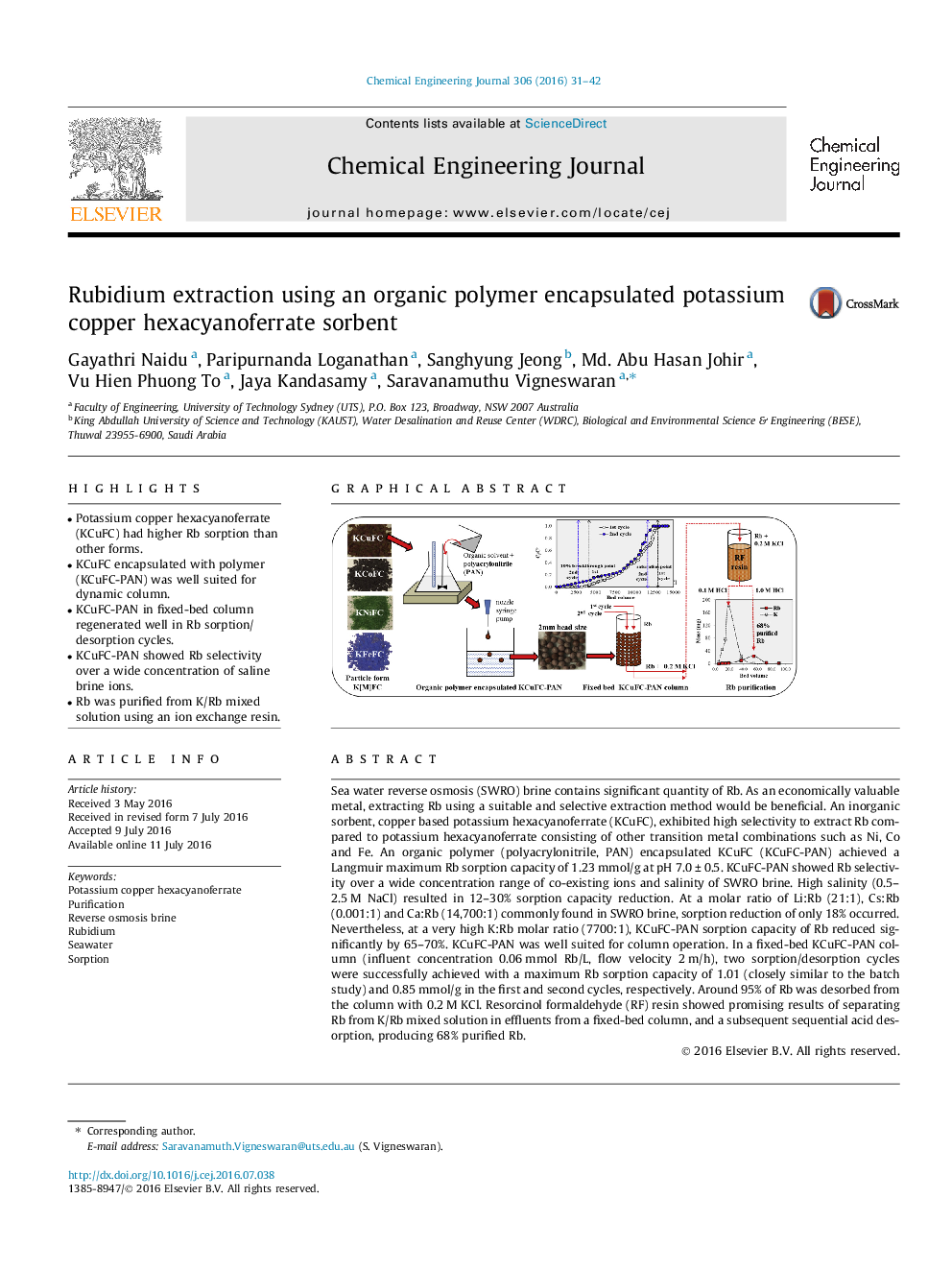| کد مقاله | کد نشریه | سال انتشار | مقاله انگلیسی | نسخه تمام متن |
|---|---|---|---|---|
| 145237 | 456336 | 2016 | 12 صفحه PDF | دانلود رایگان |
• Potassium copper hexacyanoferrate (KCuFC) had higher Rb sorption than other forms.
• KCuFC encapsulated with polymer (KCuFC-PAN) was well suited for dynamic column.
• KCuFC-PAN in fixed-bed column regenerated well in Rb sorption/desorption cycles.
• KCuFC-PAN showed Rb selectivity over a wide concentration of saline brine ions.
• Rb was purified from K/Rb mixed solution using an ion exchange resin.
Sea water reverse osmosis (SWRO) brine contains significant quantity of Rb. As an economically valuable metal, extracting Rb using a suitable and selective extraction method would be beneficial. An inorganic sorbent, copper based potassium hexacyanoferrate (KCuFC), exhibited high selectivity to extract Rb compared to potassium hexacyanoferrate consisting of other transition metal combinations such as Ni, Co and Fe. An organic polymer (polyacrylonitrile, PAN) encapsulated KCuFC (KCuFC-PAN) achieved a Langmuir maximum Rb sorption capacity of 1.23 mmol/g at pH 7.0 ± 0.5. KCuFC-PAN showed Rb selectivity over a wide concentration range of co-existing ions and salinity of SWRO brine. High salinity (0.5–2.5 M NaCl) resulted in 12–30% sorption capacity reduction. At a molar ratio of Li:Rb (21:1), Cs:Rb (0.001:1) and Ca:Rb (14,700:1) commonly found in SWRO brine, sorption reduction of only 18% occurred. Nevertheless, at a very high K:Rb molar ratio (7700:1), KCuFC-PAN sorption capacity of Rb reduced significantly by 65–70%. KCuFC-PAN was well suited for column operation. In a fixed-bed KCuFC-PAN column (influent concentration 0.06 mmol Rb/L, flow velocity 2 m/h), two sorption/desorption cycles were successfully achieved with a maximum Rb sorption capacity of 1.01 (closely similar to the batch study) and 0.85 mmol/g in the first and second cycles, respectively. Around 95% of Rb was desorbed from the column with 0.2 M KCl. Resorcinol formaldehyde (RF) resin showed promising results of separating Rb from K/Rb mixed solution in effluents from a fixed-bed column, and a subsequent sequential acid desorption, producing 68% purified Rb.
Figure optionsDownload as PowerPoint slide
Journal: Chemical Engineering Journal - Volume 306, 15 December 2016, Pages 31–42
